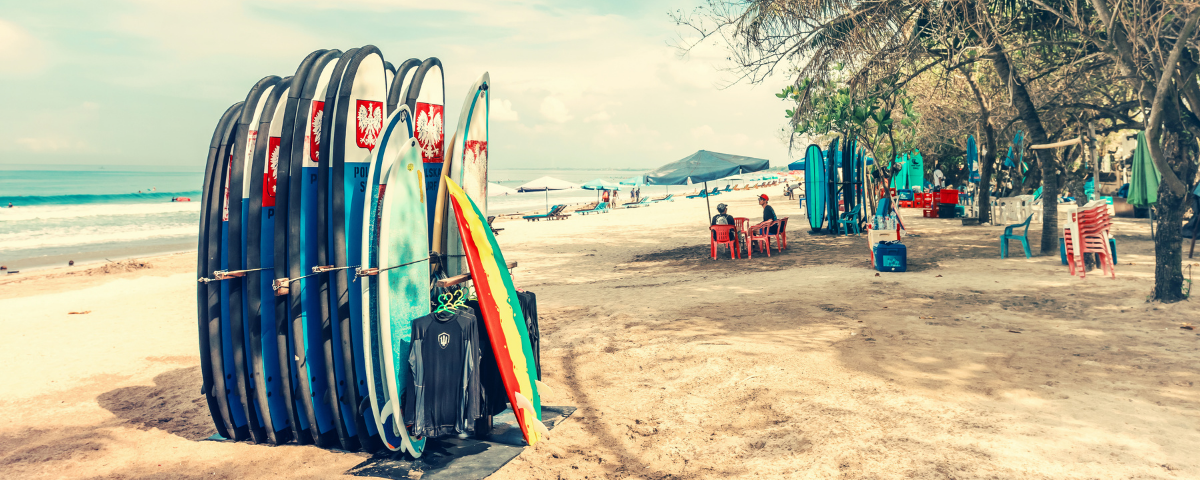Surfing is a hobby, a profession, and a kind of holiday that can be experienced all around the world. It is all about finding the tallest waves to make the challenge greater. In terms of how good we can become at it, this will be determined by the amount that we do it, the more places we have done it, and the type of surfboard that we will use to enhance our performance.
With performance in mind, we shall explore for your interest the differences between surfboards that will affect our decisions about which type to go for.
Materials
Surfboards can be made out of foam, as in the soft-top, as well as epoxy, polyurethane, and wood. So, let us consider the pros and cons of each.
Soft-top surfboards
These are ideal for beginners because of their low cost and low maintenance in terms of not always needing to wax. In their favour, too, they are stable and buoyant, and wiping out with it is a lot less painful. On the downside, they will not last all that long and are never likely to match the performance levels of the more expensive boards.
Epoxy surfboards
The epoxy surfboards are durable and light to catch the smaller waves and their materials are environmentally friendly. However, they do cost more, particularly if you desire a hand-shaped board. Their stability in choppy water is not great, either, and their rigid material does not have as much feedback as the poly boards.
Polyurethane (poly) surfboards
This inexpensive and easy to repair alternative is worthy of consideration. This is because poly boards are also more flexible than their epoxy alternative. Also, heavier to cope with choppier conditions. The disadvantage with them, though, is that they are easy to damage and have a weight to them that could prove too challenging for beginners. So, they should perhaps be thought of more as an intermediate-level board.
Wooden surfboards
It is an environmentally-friendly option to go for a wooden surfboard because if you take good care of it then it will last for a lifetime. Although, they are heavier to manoeuvre and usually more expensive to buy. As far as them being heavier, this can be turned into a positive with a more experienced surfer, who will use that extra weight to carry momentum as well as handle the choppier conditions.
Shapes
Surfboards will also come in different shapes that offer greater performance and allow for tricks to be performed.
The fish surfboards are perfect for performing well where there are fast and powerful waves, although not so good when conditions are calmer. Their shape comes from their fish-like notched tail. They will be approximately the same length as the shortboards.
Shortboards are essential if you are wanting to do acrobatic stunts with waves. These boards are low-volume and come with thin rails and pointed noses that give them the ideal turning ability and make them suited to greater control.
Longboards are ideal for all ages and skill levels. They have the edge over shortboards when it comes to their paddling ability and greater stability. They are capable of catching most waves. Because of their greater surface area, you can catch waves earlier and therefore ride them for longer than with other types of surfboards. It is exciting to think that even when the waves barely reach above ankle level, you can still surf when on a longboard.
Gun surfboards are for the advanced surfer, explaining why many will not have heard of them. This is not about them being harder to use but the fact that they are designed for the expert looking to ride the powerful waves that would have beginners off their boards in seconds.
Length
It is considered that a surfboard between 8 and 9 feet is ideal for beginners. So, it is a case of aiming for a size between the shortboard and the longboard when you are a beginner. The considerations as you progress then become more about the performance that you are looking for from the surfboard in terms of different surfing conditions. This comes from its materials and its shape.
So, choosing a suitable surfboard for your needs, whether they be personal, in the case of a holiday, or relate to wanting to perform well in competition, will be about considering not just the material it is made from but also its shape. When beginning, to have a medium-length board will be just as important as having a shortboard when you are a professional and want to perform certain tricks.





